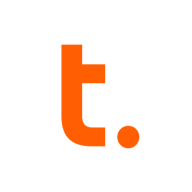

Teradata and SnapLogic compete in data processing and integration solutions. Teradata seems to have the upper hand with its robust parallel processing and analytics capabilities for large-scale data management.
Features: Teradata's architecture offers highly scalable performance and fast query processing, supported by its parallel processing capabilities and analytical features for in-depth insights. SnapLogic provides a low-code environment for swift integration, notable for its user-friendly interface and ability to handle complex integrations rapidly. SnapLogic's API management and connectivity enhance agile deployment.
Room for Improvement: Teradata could enhance its cloud compatibility and cost-effectiveness while better supporting unstructured data. Improved cloud services and pricing models are suggested. SnapLogic could benefit from enhanced API management and large dataset handling. Users seek more pre-built connectors for easier large-scale integration.
Ease of Deployment and Customer Service: Teradata's deployment options, including on-premises and hybrid solutions, provide flexibility but highlight scalability and cost challenges. Its technical support is reputable, but faster response and improved training are desired. SnapLogic focuses on hybrid and cloud deployment with efficient support structures and proactive client feedback management.
Pricing and ROI: Teradata is seen as costly yet offers substantial returns for complex projects with its comprehensive analytics. Its recent pricing changes aim to be more flexible. SnapLogic's pricing is viewed as more aligned with its integration value, offering flexibility and proven ROI, although initial costs may rise compared to simpler solutions.
The technical support from SnapLogic is excellent, and I would give it a complete ten.
The technical support from Teradata is quite advanced.
Customer support is very good, rated eight out of ten under our essential agreement.
I rate the scalability of SnapLogic as eight out of ten.
This expansion can occur without incurring downtime or taking systems offline.
Scalability is complex as you need to purchase a license and coordinate with Teradata for additional disk space and CPU.
I would rate the stability of SnapLogic as nearly ten out of ten.
I find the stability to be almost a ten out of ten.
The workload management and software maturity provide a reliable system.
If the AI capabilities and integrations were more intuitive and easy to learn for new users, it would be greatly beneficial.
I tend to frequently communicate with SnapLogic to ask for additional features, and they have been responsive.
Unlike SQL and Oracle, which have in-built replication capabilities, we don't have similar functionality with Teradata.
There would be only one point of improvement if the price could be lower.
SnapLogic is positioned at around seven or eight out of ten in terms of pricing.
Initially, it may seem expensive compared to similar cloud databases, however, it offers significant value in performance, stability, and overall output once in use.
Teradata is much more expensive than SQL, which is well-performed and cheaper.
I also like the whole child-parent pipeline feature; it allows me to break up a process into smaller pieces and then have one big pipeline that controls these smaller pipelines.
I find SnapLogic to be user-friendly, especially for beginners with limited experience in data engineering or ETL.
The data mover is valuable over the last two years as it allows us to achieve data replication to our disaster recovery systems.


The SnapLogic Intelligent Integration Platform uses AI-powered workflows to automate all stages of IT integration projects – design, development, deployment, and maintenance – whether on-premises, in the cloud, or in hybrid environments. The platform’s easy-to-use, self-service interface enables both expert and citizen integrators to manage all application integration, data integration, API management, B2B integration, and data engineering projects on a single, scalable platform. With SnapLogic, organizations can connect all of their enterprise systems quickly and easily to automate business processes, accelerate analytics, and drive transformation.
Teradata is a scalable data analytics platform designed to meet enterprise demands for large-scale data management and processing, focusing on performance, scalability, and security for complex query executions.
As a leading data warehousing solution, Teradata integrates advanced analytics enabling organizations to derive insights from massive datasets. It supports high-volume data workloads with its architecture optimized for analytical queries. Users benefit from its robust scalability, allowing seamless expansion as data grows. Teradata's SQL engine is compatible with a wide range of data types, ensuring flexibility in data analysis. With advanced security measures, it protects sensitive data across various environments, providing peace of mind to users handling critical information.
What are the most important features of Teradata?Teradata is widely used in industries like finance, telecommunications, and healthcare, where data-driven decisions are critical. Companies leverage its robust analytics capabilities to enhance customer experiences, streamline operations, and ensure compliance with regulatory requirements. In these sectors, quick access to data insights can significantly impact competitive advantage.
We monitor all Data Integration reviews to prevent fraudulent reviews and keep review quality high. We do not post reviews by company employees or direct competitors. We validate each review for authenticity via cross-reference with LinkedIn, and personal follow-up with the reviewer when necessary.